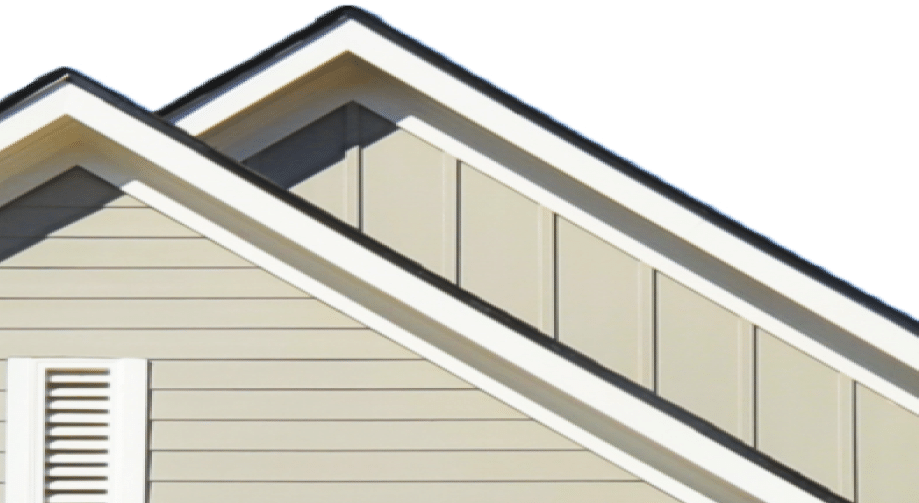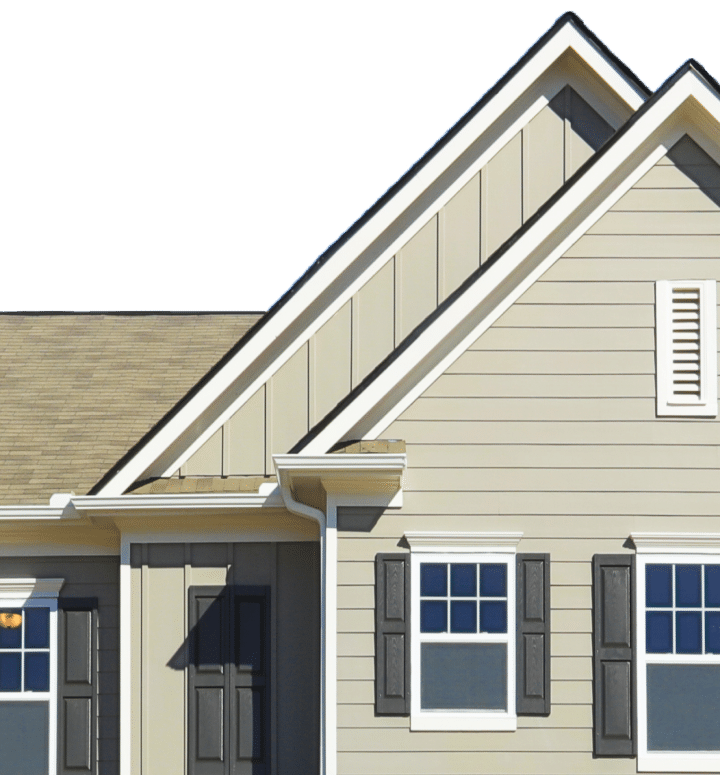Compare Home Improvement Loans From 15+ Lenders in 2 Minutes
Calculating your real-time rates from the industry's best lenders...

What is a Home Improvement Loan?
Why Use a Personal Loan for Home Improvement?
Personal loans are a popular type of installment loan where you borrow money and pay it back on a monthly basis over an specified time period — typically two to five years, or sometimes longer. Some lenders offer extra-long repayment terms for home improvement loans, sometimes up to 12 years.
If you need to make quick repairs or improvements to your home but don’t have enough savings or home equity to cover the cost, you may find that a personal loan offers advantages over something like a credit card or home equity line of credit (HELOC). You also don’t usually need to put up something (such as your home equity) as collateral on the personal loan.
Personal loans are often quicker than other home improvement financing options and usually have lower interest rates than credit cards. If you need an emergency repair, a personal loan can often be approved and transferred to your bank account within a matter of days. Unlike other types of financing, you won’t have to wait for a home appraisal.

Home Improvement Loan Benefits
- Low Fixed Interest Rates
Fixed rate personal loans offer an alternative to higher-interest credit cards or lines of credit with variable interest rates.
- Quick Application and Funding
- Loan Amounts from $600 to $200,000
- No Collateral Required
Most personal loans are unsecured, meaning you don’t risk losing your property if you can’t pay the loan back. When using a HELOC or home equity loan, your home is put up as collateral.
- No Home Appraisal Required
Because HELOCs and home equity loans require that you have equity in your home, your lender may require an appraisal of your home’s value before lending the money. Personal loans won’t require an appraisal.


The Joys (and Responsibilities) of Home Ownership
Major repairs
Okay, let’s get the least fun one out of the way. If you own a home, something big will break eventually, so start saving now. But if you don’t have the savings to pay for a needed repair, a personal loan could help you pay for all or part of it.
Renovations and additions
Let’s say you bought a small starter home and your family is growing. With home prices hitting all-time highs, you may decide it makes more sense to add space to your existing home than packing up and moving. A personal loan can help you pay for that new addition.
Replacing furniture and appliances
The thing about major appliances is that they will eventually die – they really don’t make them like they used to, do they? And they’re expensive to replace. If you’ve got a dead refrigerator at home, you may find that a personal loan will get you funds fast enough that the food you’ve moved to your camping cooler won’t even spoil before you buy your new fridge.
Increasing your home’s efficiency
On top of the increasing costs of goods, energy costs are also on the rise. You can save money and help save the planet by making your home more efficient through insulation, new appliances, or solar panels.
How To Get a Home Improvement Loan That Works for You
1. Get Pre-Qualified
Visit Purefy’s personal loan tool to see which lender offers the best rate.
2. Apply Online
Submit your application and supporting documentation to your chosen lender.
3. Receive Your Money
Sign your loan agreement and collect your funds.
4. Get Started on Your Project
Now that you’ve got your funds in hand, you can break ground.
Home Improvement Loan Calculator
See how much your home improvement loan will cost in seconds. Enter your loan amount, interest rate, and repayment term to view your estimated monthly payment and total interest.
Results
$127
Monthly Payment
$3,210
Lifetime Interest
Want to find a low interest home improvement loan? Use our rate comparison tool to check multiple lenders in 2 minutes with no impact on credit.
Home Improvement Loan - FAQs
A home improvement loan is a type of personal loan that lets you borrow money from a financial institution and pay it back on a monthly basis over a set repayment term length. The amount you qualify for and interest rate on your personal loan will be based on your credit profile and other factors.
Repayment terms vary by lender, but many lenders offer terms ranging from two to six years. Some lenders offer longer terms for home improvement loans, sometimes up to 12 years. If you take out a personal loan, funds are generally sent to you very quickly — as soon as the same day, or within a couple business days.
The most common type of unsecured home improvement loan is a personal loan, which usually doesn’t require you to put up any collateral. This is different from other loans that can be taken out for home improvement projects, such as home equity loans and lines of credit – these types of loans use your home as collateral.
Still, some personal loans are secured, and they require you to put up collateral. Collateral is something of value, such as cash savings, an automobile, or even a house, which is used to guarantee the loan. If you are unable to make payments in the future, ownership of the collateral may pass from you to the lender.
- HELOCs, or home equity lines of credit, are lines of credit taken out using your home as collateral. With HELOCs the lender agrees to lend you a maximum amount within a given term length, called a draw period. A borrower can use as much or as little of that maximum amount as they want within the draw period of the line of credit, and then must repay it back during the repayment period.
- Home equity loans are much like HELOCs except the amount of the loan is decided during the application process and is funded to the borrower in one lump sum after approval. Because HELOCs and home equity loans use the home as collateral, the lender will likely require an appraisal of the property before approving the loan amount.
- Personal loans taken out for home improvement are not typically backed by your home, which usually means there is a less complicated approval process and faster funding without the risk of losing your home should you be unable to repay the loan at some point in the future.
Getting a personal loan is usually a quick and easy process compared to other types of loans like HELOCs, home equity loans, and mortgages. Most lenders allow you to check your rate and prequalify without any impact on your credit score — you can also check multiple lenders at once with Purefy’s tool.
Once you’ve prequalified, you can submit your application online, which generally takes less than 15 minutes. The lender will run a hard credit check and may request supporting documentation such as a paystub or tax returns. If your loan is approved, the lender will typically electronically transfer the funds directly to your bank account.
The process can be completed in anywhere from the same day to a few business days, depending on the lender, and your qualifications.
A fixed rate loan has an interest rate that will not change over time, meaning your monthly payment will be the same throughout the life of the loan. Personal loans are typically fixed, but some lenders do offer variable rates.
A variable rate loan, on the other hand, has an interest rate that will fluctuate with market rates. They are usually tied to the Secured Overnight Financing Rate or “SOFR” index. If market rates go down, your rate and monthly payment will go down, but if market rates go up, so will your rate and payment.
Variable rates tend to be a bit lower than fixed rates, at least to start. They can be a good option if you plan on paying off your loan quickly and you don’t expect market rates to rise much while you are repaying your loan. They can also be attractive when market rates are at historic highs and you expect rates to decline.
Credit cards and HELOCs are typically variable rate lines of credit, and although fixed-rate credit cards and HELOCs do exist, they are rare. Home Equity Loans can be fixed or variable.
Purefy makes comparing lenders easy. Instead of going to each lender’s site and putting your information in repeatedly to see who will give you the best deal, you can put your information in once and we’ll show you the best prequalified rates from an array of lenders.
When comparing personal loan options, the key items to consider are:
- Which lender is offering me the lowest interest rate on the repayment term I want?
- Can I afford the monthly payment?
- Does the lender charge any fees, such as origination fees, late payment fees, or prepayment penalties?
- How long until the loan will fund?
Yes, you can use a personal loan to pay off other debts, and even use them as a method to consolidate multiple debts.
If you have higher-interest credit card debt or took out a high interest loan, paying off that debt with a low interest rate personal loan can save you a significant amount of interest and help you get out of debt much faster.
Remember, credit cards usually have variable interest rates, which means that your interest payments could go up if market rates go up. Personal loans typically offer fixed rates.
Yes, you may be able to get a home improvement loan if you have bad credit, but your options may be limited, and it could be more difficult to qualify. Bad credit is generally defined as a credit score in the low 600s or worse.
Check our rate comparison tool to see if you prequalify with our lender network – you might be surprised, and it won’t hurt your credit score to check.
While you don’t necessarily need good credit to obtain a home improvement loan, having good credit will likely result in lower interest rates and more lenders to choose from.
The requirements to qualify for a home improvement loan vary from lender to lender, but most lenders will look for things like:
- A fair or good credit score – although requirements vary by lender
- Steady income and employment
- Borrower 18 years or older
- Borrower is a U.S. Citizen or Permanent Resident with a Social Security Number
The amount you can borrow varies from lender to lender, but some lenders offer loans as high as $50,000 and some even as high as $100,000.
However, even if a lender offers a high loan amount, to qualify for the largest loans you may need to meet specific credit and debt-to-income requirements, and you may need to secure your loan with collateral.
Nope! Purefy advertises rates on behalf of our partners and will never charge you a fee to use our site.
Some lenders may charge fees such as origination fees, late fees, or prepayment penalties – consider these in addition to factors like interest rate when deciding to take out a loan.
Not at all! Purefy’s comparison tools only use soft pulls, and a soft pull has no impact on your credit score.
If you decide to submit a full application with a lender, that lender will ask to perform a hard credit pull, which may temporarily lower your credit score, usually by a few points. That’s why it’s so important to use a rate comparison tool like the one at Purefy before moving forward with an application.
The lowest rates advertised by lenders are usually only available to borrowers with excellent credit who meet the lender’s other requirements. In general, the higher your credit score, the better chance you have at getting a lower rate. Factors such as income, debt-to-income ratio, and other criteria can also affect your rate.
When you compare rates on Purefy, you’ll see the payment estimate for each of your loan options. If you would like to estimate payments on your own, you can also use our Personal Loan Calculator.
The easiest way to find a low-interest home improvement loan and see if you qualify is to use a comparison tool such as the one offered by Purefy. Searching for offers from multiple lenders with one form is the best way to compare options and find the best loan for your needs.
Funding times vary by lender. Some lenders can fund loans on the same day, while others may take a few business days or longer. Money is usually sent electronically to your bank account, ensuring fast delivery.

